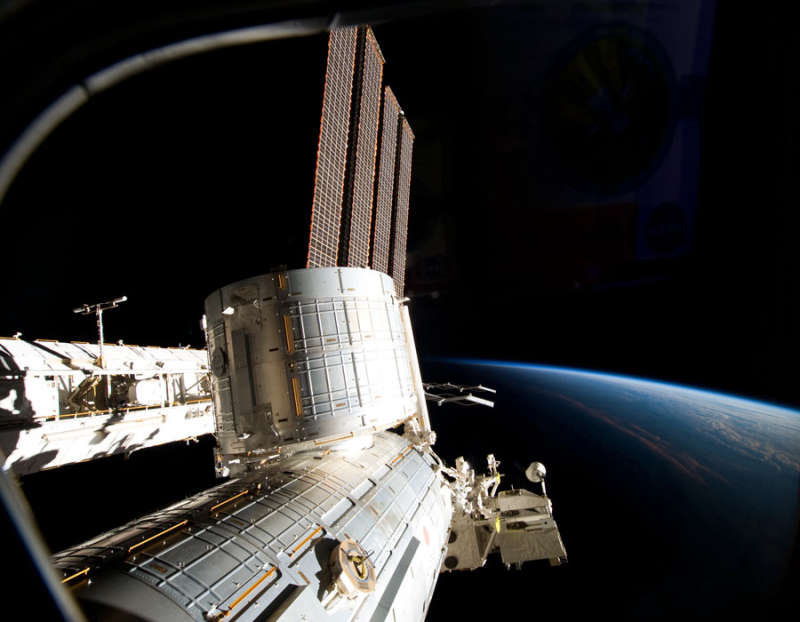Explanation: The International Space Station is the largest object ever constructed by humans in space. The station perimeter now extends over roughly the area of a football field, although only a small fraction of this is composed of modules habitable by humans. The station is so large that it could not be launched all at once -- it is being built piecemeal with large sections added continually by flights of the Space Shuttle. To function, the ISS needs huge trusses, some over 15 meters long and with masses over 10,000 kilograms, to keep it rigid and to route electricity and liquid coolants. Pictured above, part of the immense space station was photographed out of a window by a member of the visiting Space Shuttle Discovery STS-131 crew. Visible in the foreground is Japan's Kibo research module, while a large truss is visible toward the left. On the far right, a crescent Earth slices through the blackness of space.
1999 2000 2001 2002 2003 2004 2005 2006 2007 2008 2009 2010 2011 2012 2013 2014 2015 2016 2017 2018 2019 2020 2021 2022 2023 2024 2025 |
Yanvar' Fevral' Mart Aprel' Mai Iyun' Iyul' Avgust Sentyabr' Oktyabr' Noyabr' Dekabr' |
NASA Web Site Statements, Warnings, and Disclaimers
NASA Official: Jay Norris. Specific rights apply.
A service of: LHEA at NASA / GSFC
& Michigan Tech. U.
|
Publikacii s klyuchevymi slovami:
ISS - Earth - Mezhdunarodnaya kosmicheskaya stanciya - MKS
Publikacii so slovami: ISS - Earth - Mezhdunarodnaya kosmicheskaya stanciya - MKS | |
Sm. takzhe:
Vse publikacii na tu zhe temu >> | |
